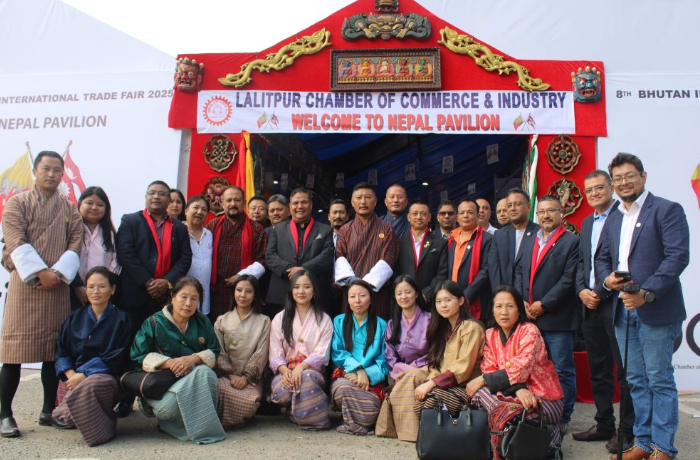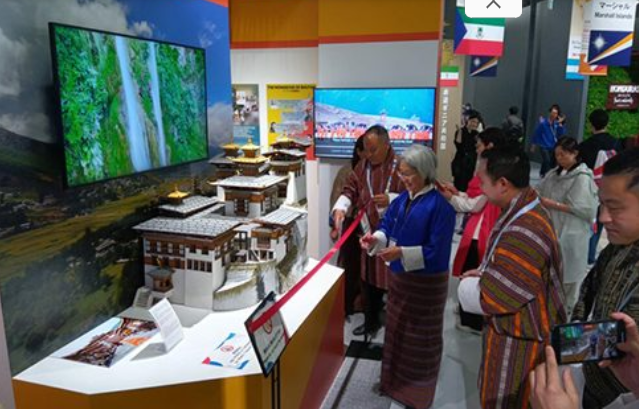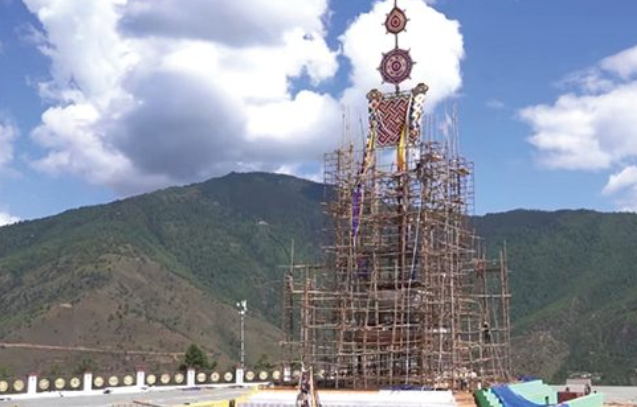
Agency: The recently concluded 8th Bhutan International Trade Fair (BITF) has, over the years, evolved into a premier platform for both national and international exhibitors to foster trade, investment, and business networking. This year’s edition continues that legacy by focusing strongly on Business-to- Business (B2B) interactions, enhancing regional cooperation, and building functional market linkages among participating enterprises.
The 2025 fair brings together an impressive lineup of exhibitors from Bhutan, India, and Nepal, showcasing the diversity of the region’s trade landscape. With more than 244 stalls, the exhibition features an extensive range of products and services cutting across various sectors. For both local consumers and international visitors, the fair offers an expansive showcase of regional and global trade opportunities.
The BITF is not only about business exchanges but also about cultural celebration. A strategic blend of business and culture ensures that visitors experience both the economic and social dimensions of trade. Among the major highlights this year are; Brand Bhutan Products: A dedicated pavilion showcasing Bhutan-made goods, underscoring the country’s growing commitment to strengthening local industries. Handicraft and Handloom Displays: Special exhibits by the North Eastern Handicrafts and Handlooms Development Corporation Ltd. (NEHHDC), India, highlighting regional artistry.
Traditional Craft Demonstrations from Nepal: Live workshops where visitors can witness artisans at work, offering hands-on cultural engagement. Cane and Bamboo Crafts: A display by the North Eastern Development Finance Corporation Ltd., Assam, India, highlighting eco- friendly and sustainable craft practices. Regional Culinary Experiences: Food stalls from Bhutan, India, and Nepal, providing visitors with a taste of authentic traditional and contemporary cuisine.
During inaugural address, Ministry of Industry, Commerce & Employment Namgay Dorji emphasized the broader significance of the BITF in fostering cross-border collaboration. “This fair is more than an exhibition; it is a platform for meaningful collaboration, knowledge exchange, and building sustainable trade partnerships across the region,” he said. He stressed that the BITF serves not just as a commercial space but also as a catalyst for dialogue and cooperation among business leaders, entrepreneurs, and policymakers.
For international participants, the fair presents both opportunities and challenges. Amir Shakya of Mangal Handicraft, Nepal, shared his thoughts on the experience of showcasing in Bhutan. “Participating in the BITF allows us to reach new markets and share our craftsmanship with a wider audience,” Amir Shakya explained.
However, he pointed out some obstacles. “One of the biggest challenges we face is adapting traditional handicrafts to modern consumer preferences while still preserving authenticity. Transporting fragile handmade items across borders is also costly and requires careful handling,” he added.
Despite these challenges, Amir Shakya expressed optimism about innovation shaping the future of his business. “We are now blending traditional designs with contemporary styles to appeal to younger buyers. For instance, we are experimenting with eco-friendly materials and modern utility-based products while keeping the essence of our Nepali craftsmanship alive. Events like the BITF inspire us to innovate and learn from our regional counterparts,” he noted.
The fair has also drawn enthusiastic responses from visitors, both Bhutanese and international. Tashi Dema, a resident of Thimphu, expressed her appreciation for the diverse offerings. “I really enjoy visiting the trade fair every year because it brings together so many unique products from across the region. This year, I was particularly impressed by the eco- friendly handicrafts and organic products. It gives us a chance to buy things that are not usually available in local shops,” she said.
For many tourists, the fair offers a rare cultural and commercial blend. Rajiv Sharma, an Indian tourist, shared his perspective. “The BITF is not just about business it feels like a cultural exchange. I loved seeing the traditional Nepalese craft demonstrations and sampling Bhutanese food. It is a memorable experience, and I think events like this strengthen people-to-people connections across borders,” Sharma remarked.
Beyond its cultural appeal, the BITF continues to play a crucial role in shaping Bhutan’s image as an emerging hub for regional trade and commerce. By bringing together a wide range of stakeholders under one roof, the fair promotes dialogue, cooperation, and innovation in the trade sector.
The organizers anticipate strong engagement from both domestic and international participants over the course of the five days, with significant opportunities for partnership- building and market expansion. The combination of cultural showcases, regional specialties, and structured networking opportunities reflects Bhutan’s strategic ambition to strengthen its economic role in South Asia. As the event unfolds, the 8th BITF 2025 is expected to further solidify its reputation as not just a commercial exhibition but also a celebration of the region’s shared culture, craftsmanship, and entrepreneurial spirit



